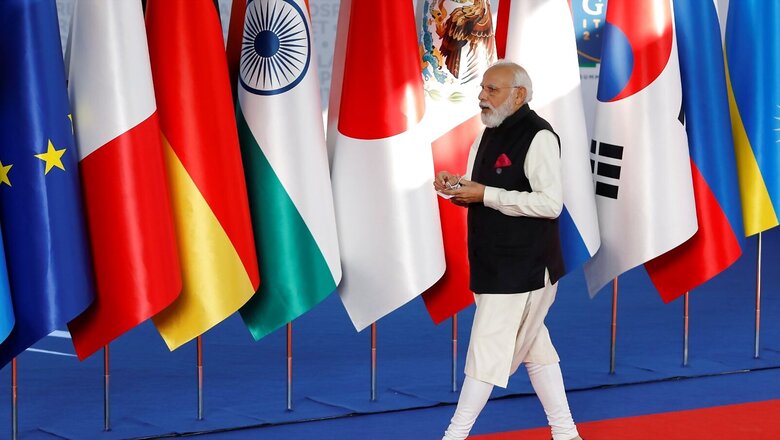
views
The 21st century has seen a boom in building transformative technological and digital solutions to cater to different social and economic challenges. The concept of technology becoming a fulcrum for development has showcased the numerous ways in which different platforms and digital infrastructure can be built to ensure public service delivery as well as streamline governance.
India’s role in the field can be characterised by the extensive use of digital platforms and services for enabling governance mechanisms and schemes. From digital identities in the form of Aadhaar and digital payment systems in the form of the United Payments Interface (UPI), digital and technology solutions have contributed to society’s overall development and improved transparency in service delivery.
Considering that India has taken on the mantle of the G20 presidency in 2023, it is in the interest of both India and the G20 countries to address the role of such digital solutions (platforms, infrastructure and others) in the development sector. The presidency also offers a chance for India to showcase how such digital platforms (when used by the government on a wide population scale) can address challenges through the effective use of state-of-the-art technologies.
Leveraging the Network Effects
India has developed a number of cutting-edge digital platforms since 2009 that were designed as public goods. Every platform that is created inside the regulatory framework meets a specific need, such as one related to identity, payments, or data sharing. By providing open, free, and contestable marketplaces in the digital age, these platforms, when adopted by the general public, have developed network effects that have enhanced the effectiveness of such solutions. When combined inside the regulated framework, they help produce powerful integrated applications that enable private sector innovation and public service delivery. Research at the Bank for International Settlements (BIS) has demonstrated that this digital platform architecture has been able to accomplish in less than ten years, which would have normally taken India up to 50 years to complete.
The ability of such digital platforms has showcased how to leapfrog traditional development processes and instead focus on a much more vibrant tech and digital roadmap for fast-tracking socioeconomic mobility. This means that such public digital platforms have proved they can achieve key developmental objectives.
Bridging the Public-Private Gap
New approaches to serving underprivileged people arise when open, inclusive, and market-friendly digital public platforms/infrastructure are paired with engaged sector engagement and coordinated policy reforms. India has already shown this through FinTech and is seeing strong growth in the related healthcare, telecom, and retail industries. The ability of such digital platforms to bridge the gap between the government and the citizens through the effective utilisation of private sector technology remains a boon for any developing country.
India’s expertise in deploying and scaling such digital platforms can be broadly applied by developed, emerging, and developing nations. This is an alternative method of developing public policies because it does not favour either laissez-faire or state intervention. Thus, this strategy fulfils two seemingly incompatible functions: it aids in better public sector regulation and aids in better market participant innovation.
Capacity restrictions should not prevent developing (both advanced and emerging) nations from implementing these systems. To enable all nations to construct digital public infrastructures for their own requirements, the G20 nations should set an example.
With the upcoming G20 presidency, India will have the chance to share its knowledge with the world and inspire other G20 nations to create similar public digital platforms/infrastructures that are tailored to their particular needs. India has a unique experience to provide, where the components just serve as illustrations of how an integrated strategy is put together. They will vary from nation to nation based on the specific conditions of each nation.
The majority of nations will continue to place a high priority on developing their digital infrastructure over the next two to three decades. India has extensive expertise in creating and executing large-scale digital public infrastructure, and it has a comparative edge in communicating this effort so that other nations can benefit from its successes.
The G20 presidency of India comes at a time when multiple events are converging. The need to advance growth is widespread. Populations with short attention spans advise against relying only on conventional methods. Technology has consistently shown over the past ten years that it can be used to advance evolutionary processes. India is uniquely positioned to lead this initiative because of its experience in offering this architecture at scale. The G20 is a perfect opportunity for India to secure its legacy, with the concept of public digital platforms being an impetus for the overall development of societies across and beyond the G20 countries.
Arjun Gargeyas is an IIC-UChicago Fellow and a Consultant at the Ministry of Electronics and Information Technology (MeitY), Government of India. The views expressed in this article are those of the author and do not represent the stand of this publication.
Read all the Latest Opinions here




















Comments
0 comment